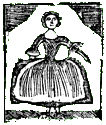The event description says:
Drawing primarily on research in German military records, Dr. Krebs brings to life the soldiers’ experiences in captivity by discussing prison conditions in detail and addressing both the American approach to war prisoners and the prisoners’ responses. The talk will last approximately 45 minutes, with time for questions at the end.Krebs is an associate professor of history at the University of Louisville. After his talk he’ll sign copies of his book, A Generous and Merciful Enemy: Life for German Prisoners of War During the American Revolution.
This HistoryNet review of his book says:
Krebs’ principal conclusion is that the German prisoners of war came to play a significant role in the American hinterland. For one thing they continued to receive pay from their units, and their dependence on purchasing sustenance from outside sources, access to which their captors made readily available, fueled the local economies. Over the course of the conflict German prisoners were hired to work on farms in Pennsylvania, at saltworks in Maryland and ironworks in New Jersey.This talk will start at 6:00 P.M., and is free and open to the public.
They were also used as political instruments against communities reluctant to support the revolution, as happened in Lebanon, Pa., in 1777 and 1778, when an influx of hundreds of German prisoners prompted local Moravians to change their stance from pacifism or loyalty to the crown to dependence upon the militia and Continental Army guards for protection. Great numbers of those same captives married local women and ended up settling permanently in the States after the war.












